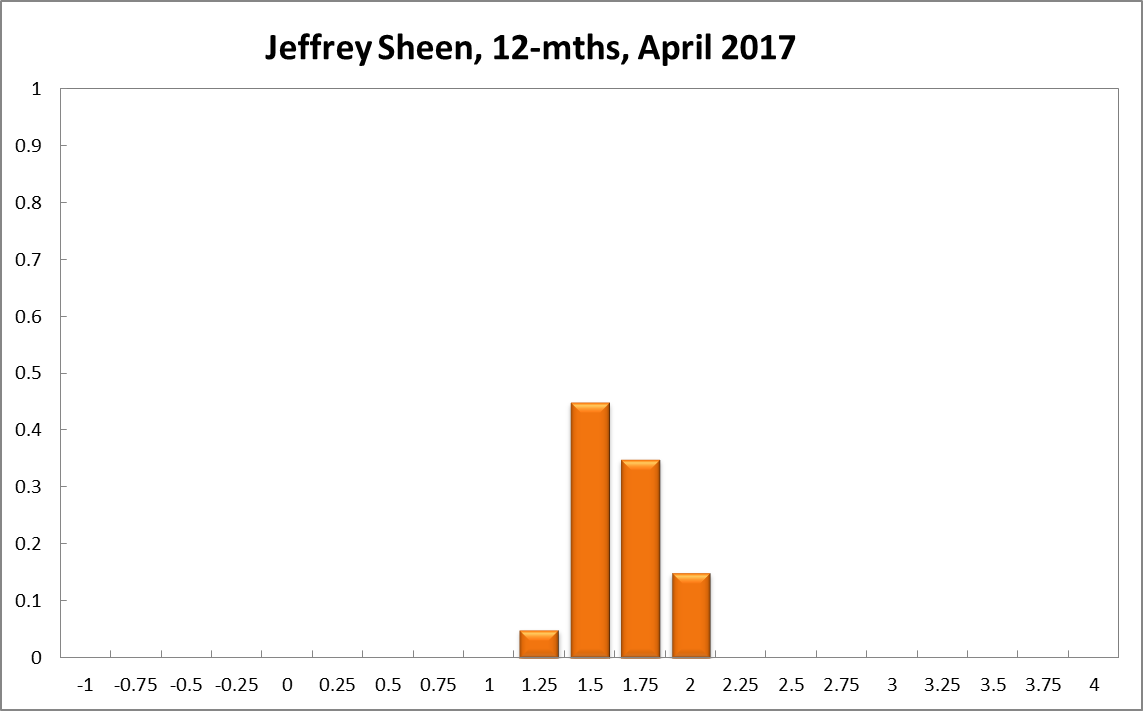The current annual GDP growth in Australia of 2.4% remains tepid, reflected in continuing low wage growth as well as business investment. With the big lenders having raised their mortgage rates in response to the cost of foreign funds, the case for a cash rate rise has been weakened.
Outcome: April 2017
Rates Should Stay On Hold as Banks Start to Move
Australia’s major banks raised mortgage interest rates, citing an increase in global financing costs. Coupled with an unexpected rise in the domestic unemployment, low inflation, and a dearth of other economic news, the CAMA RBA Shadow Board remains convinced that the cash rate should remain at its current level. It attaches a 54% probability that this is the appropriate setting. The confidence attached to a required rate cut equals 3%, while the confidence in a required rate hike equals 43%.
Inflation remains at 1.5%, well below the Reserve Bank of Australia’s official target of 2-3%. Australia’s seasonally adjusted unemployment rate unexpectedly rose to 5.9 percent in February of 2017 from 5.7 percent in January, according to the Australian Bureau of Statistics. The consensus forecast was 5.7%. This number will be closely watched by the markets and policy makers. The increase in unemployment was due entirely to a reduction in employment, in particular part-time employment, as the participation rate was unchanged. There is no new data on wages growth, which remains subdued.
The Aussie dollar, relative to the US dollar, has still not broken out of its narrow range near the 76 US¢ mark. Likewise, yields on Australian 10-year government bonds are also range-bound, around 2.7%, as are domestic share prices.
Globally, both the OECD and the IMF agree that economic growth is likely to remain tepid for a while longer. This concern was echoed by US Federal Reserve chair Janet Yellen who remarked that, “we cannot rule out the possibility expressed by some prominent economists that slow productivity growth seen in recent years will continue into the future.” While there is some positive news coming out of Asia, as trade volumes are increasing, Brexit and a volatile Trump presidency continue to put investment in a holding pattern.
Elevated house prices and the world’s third highest household debt and debt servicing ratios will continue to weigh on the RBA’s mind as the possibility of a painful price correction, with all its implications for the macroeconomy, cannot be easily dismissed.
The Shadow Board continues to prefer to hold interest rates steady but its confidence that this setting is appropriate has weakened somewhat, from 59% in March to 54%. It attaches a 3% probability (4% in March) that a rate cut is appropriate and a 43% probability (37% in March) that a rate rise, to 1.75% or higher, is appropriate.
The probabilities at longer horizons are as follows: 6 months out, the estimated probability that the cash rate should remain at 1.50% equals 20%, three percentage points down from the previous round. The estimated need for an interest rate decrease has fallen from 9% to 6%, while the the probability attached to a required increase equals 74% (68% in March). A year out, the Shadow Board members’ confidence that the cash rate should be held steady equals 16% (down from 17% in the previous three months), while the confidence in a required cash rate decrease has waned from 7% in March to 4% and in a required cash rate increase grown from 76% to 81%.
Aggregate
Current
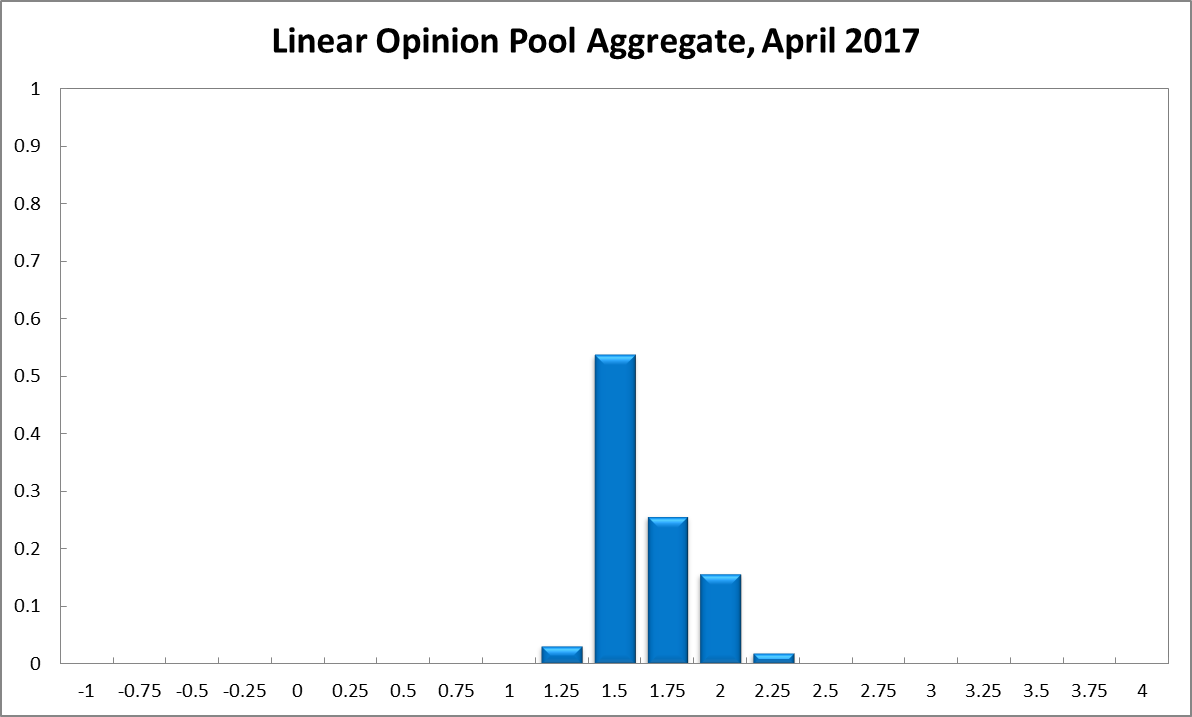
6-Months

12-Months

Paul Bloxham
Current

6-Months
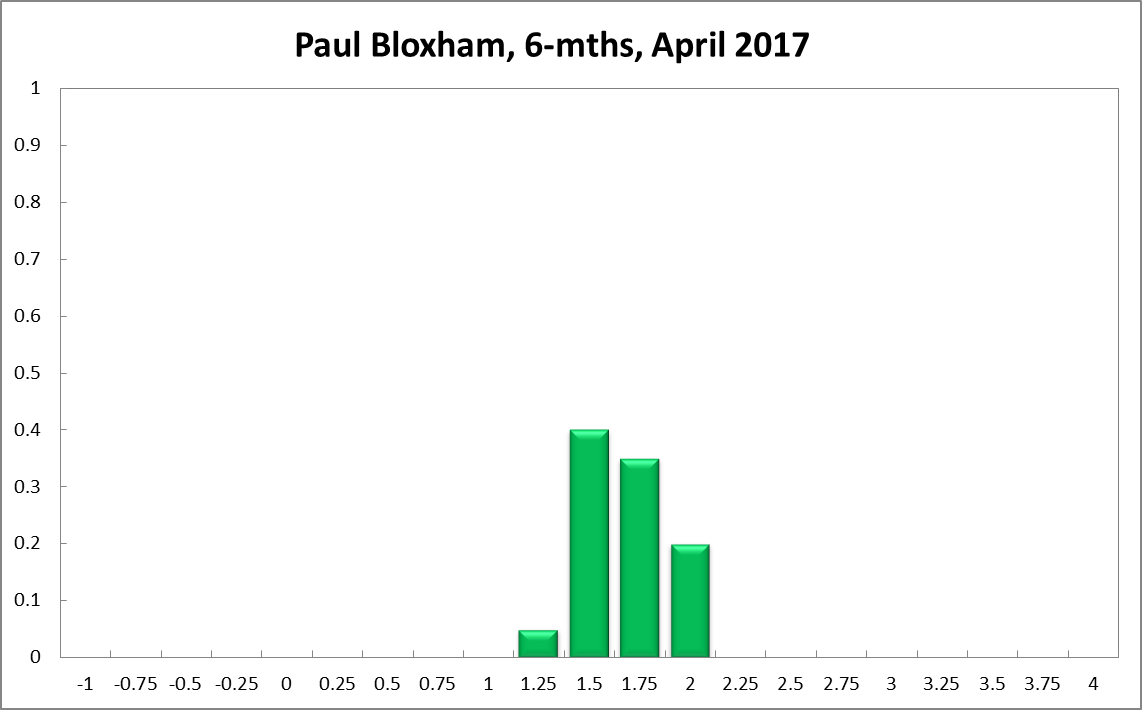
12-Months
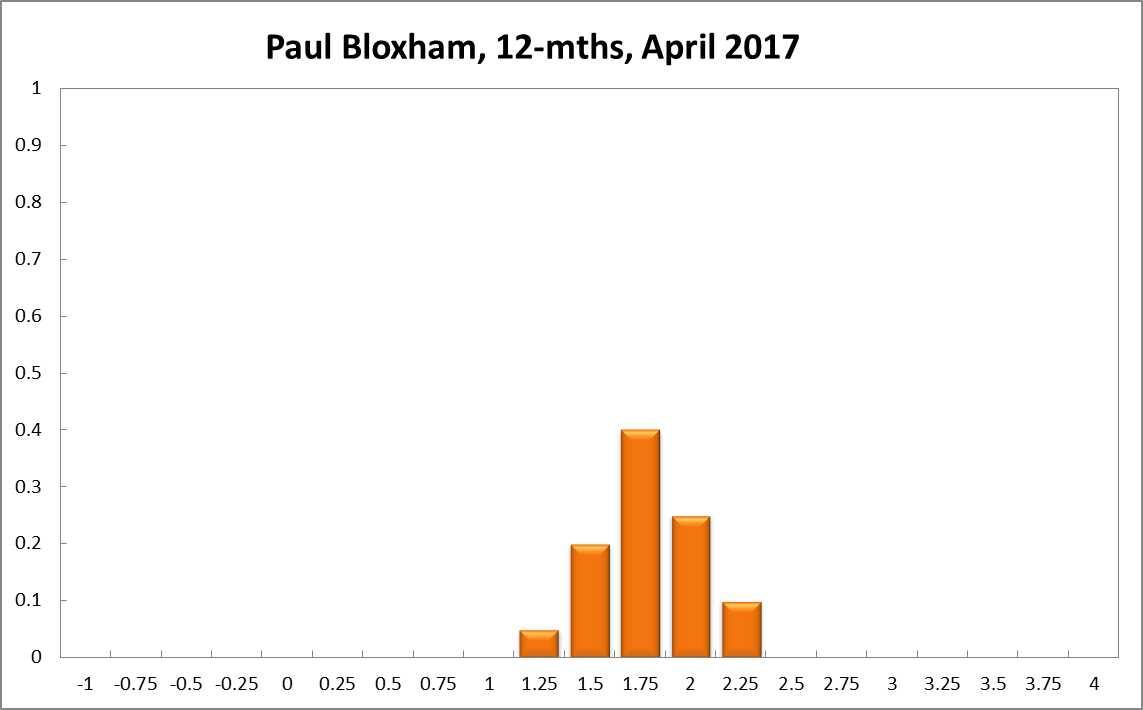
Mardi Dungey
Current
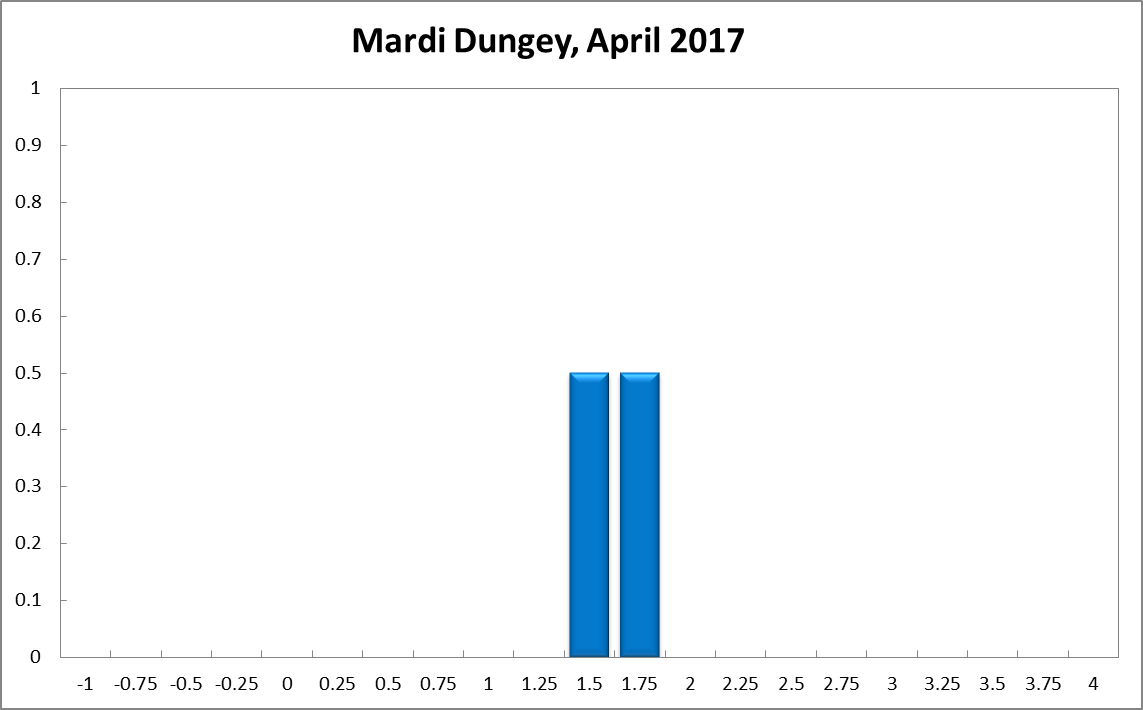
6-Months

12-Months

Bob Gregory
Current

6-Months
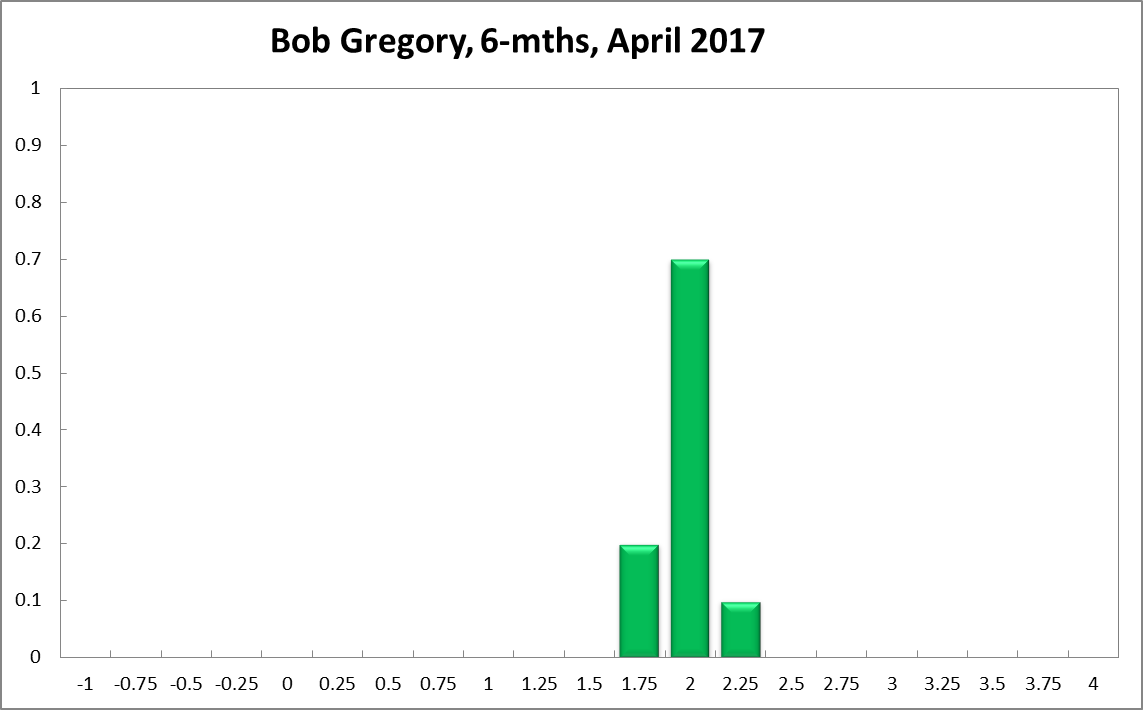
12-Months

Guay Lim
Current
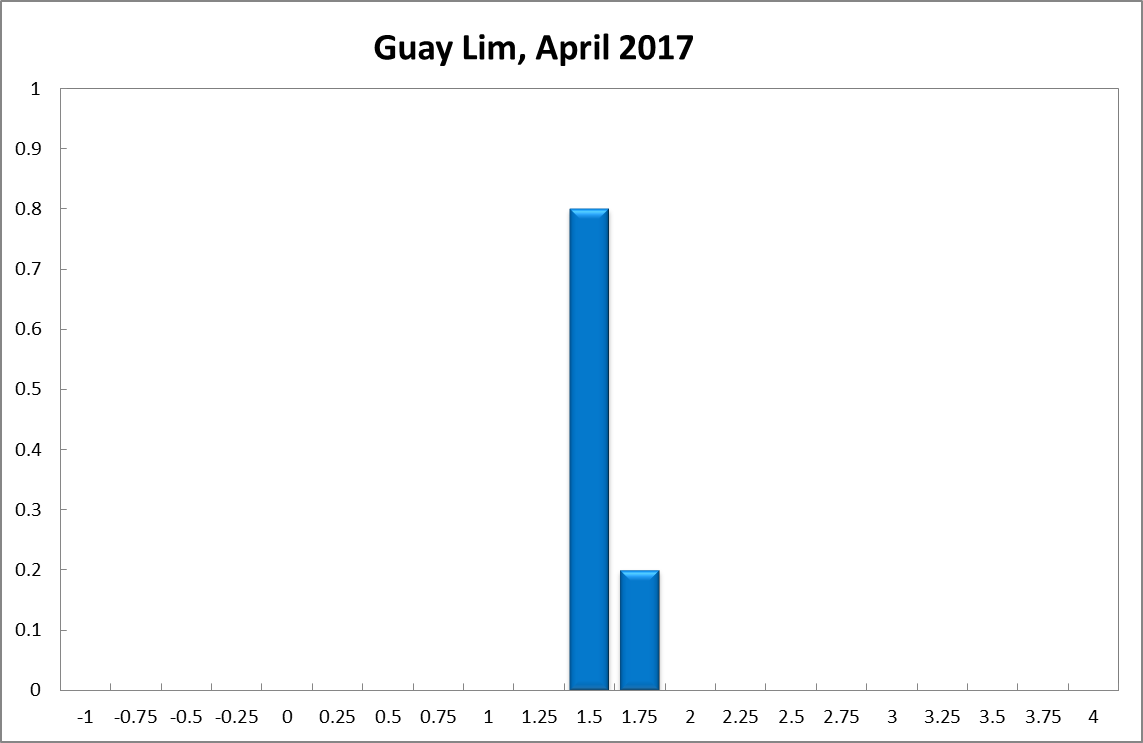
6-Months

12-Months

Warwick McKibbin
Current

6-Months

12-Months

James Morley
Current
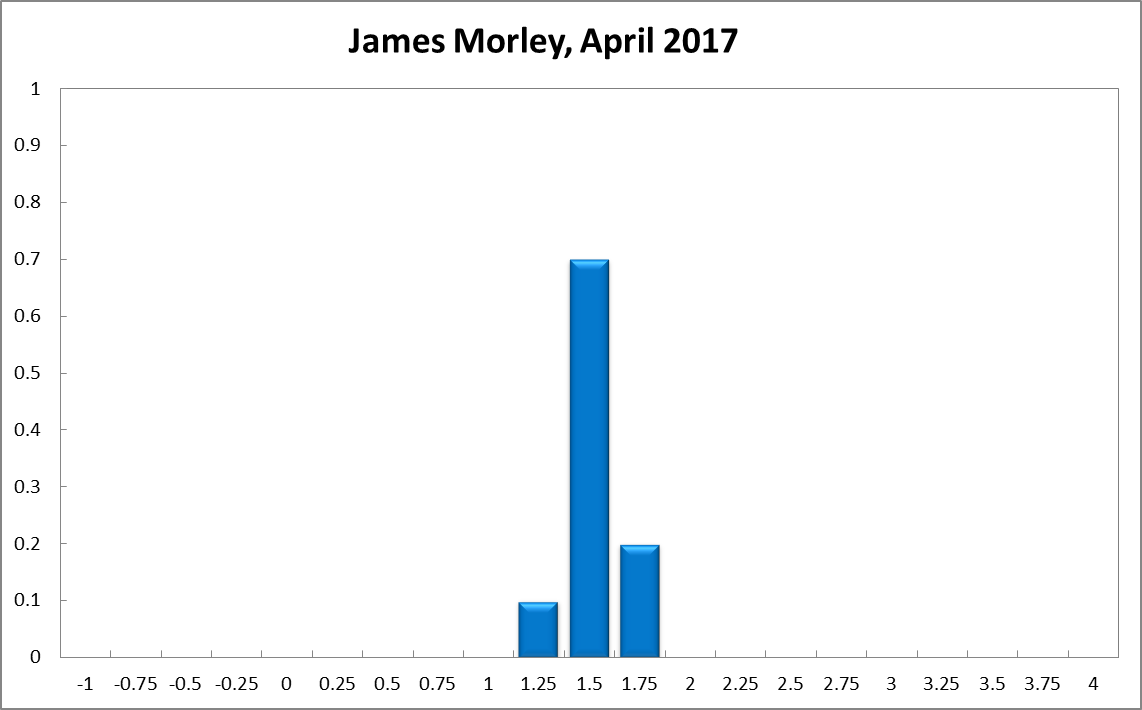
6-Months

12-Months

John Romalis
Current
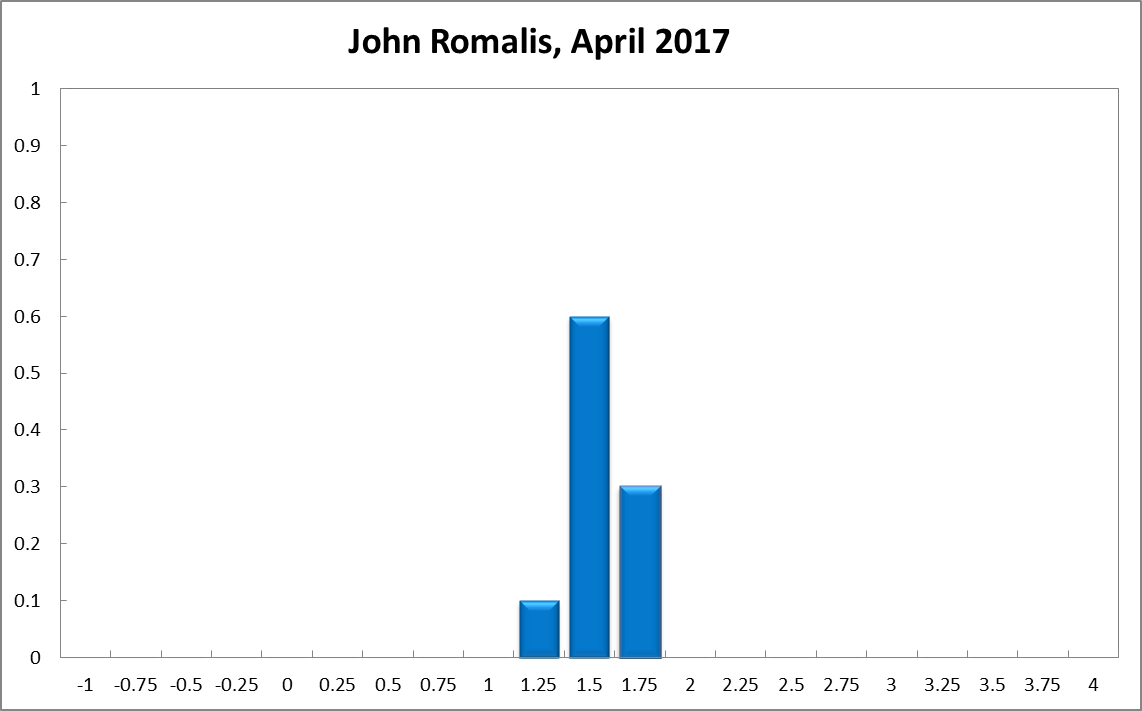
6-Months

12-Months

Jeffrey Sheen
Current

6-Months
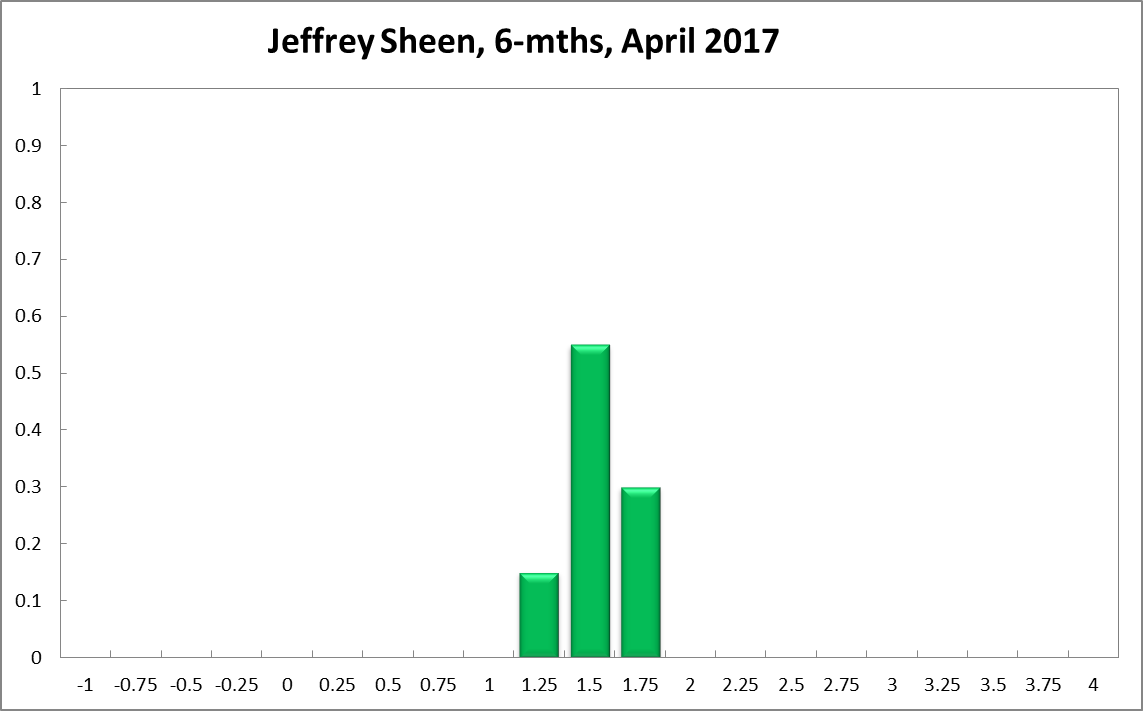
12-Months
